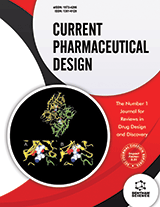Abstract
The antitumor cryptophycins are synthetic derivatives of the desipeptide cryptophycins isolated from the cyanobacterium Nostoc sp. Cryptophycin 52 that is currently in clinical trial in solid tumors, is prepared by total synthesis of four key fragments that are coupled to form the final product. The mechanism of anticancer activity of the cryptophycins has been associated with their destabilization of microtubules and with their induction of bcl-2 phosphorylation leading to apoptosis. The cryptophycins maintain activity against ovarian and breast carcinoma cells that overexpress the multidrug resistance efflux pump P-glycoprotein. Cryptophycin 52 has demonstrated a broad range of antitumor activity against both murine and human tumors. In the human MX-1 breast carcinoma xenograft cryptophycin 55 produced greater-than- additive tumor response in combination with 5-fluorouracil. In human non-small cell lung carcinoma and human small cell carcinoma xenografts, administration of the cryptophycins alon g with gemcitabine, cisplatin or carboplatin resulted in antitumor activity greater than either agent alone. The cryptophycins appear to be additive with fractionated radiation therapy in the human H460 non-small cell lung carcinoma. In the human HCT116 colon carcinoma, the cryptophycins resulted in a greater than additive tumor response when administered sequentially with 5-fluorouracil or irinotecan. Treatment of animals bearing intraperitoneal human OVCAR-2 ovarian carcinoma with cryptophycin 52 resulted in survival times that were greater than those achieved with docetaxel or paclitaxel. Cryptophycin 52 is currently in early clinical testing.
Keywords: Cryptophycins, Antimitotic Antitumor Depsipeptides, Nostoc sp, Vinca alkalo, Bcl-2, U937 Leukemia, CCRF-CEM Leukemia, HL60 Leukemia, HT-29 Colon Cacinoma
Current Pharmaceutical Design
Title: Cryptophycins: A Novel Class of Potent Antimitotic Antitumor Depsipeptides
Volume: 7 Issue: 13
Author(s): Chuan Shih and Beverly A. Teicher
Affiliation:
Keywords: Cryptophycins, Antimitotic Antitumor Depsipeptides, Nostoc sp, Vinca alkalo, Bcl-2, U937 Leukemia, CCRF-CEM Leukemia, HL60 Leukemia, HT-29 Colon Cacinoma
Abstract: The antitumor cryptophycins are synthetic derivatives of the desipeptide cryptophycins isolated from the cyanobacterium Nostoc sp. Cryptophycin 52 that is currently in clinical trial in solid tumors, is prepared by total synthesis of four key fragments that are coupled to form the final product. The mechanism of anticancer activity of the cryptophycins has been associated with their destabilization of microtubules and with their induction of bcl-2 phosphorylation leading to apoptosis. The cryptophycins maintain activity against ovarian and breast carcinoma cells that overexpress the multidrug resistance efflux pump P-glycoprotein. Cryptophycin 52 has demonstrated a broad range of antitumor activity against both murine and human tumors. In the human MX-1 breast carcinoma xenograft cryptophycin 55 produced greater-than- additive tumor response in combination with 5-fluorouracil. In human non-small cell lung carcinoma and human small cell carcinoma xenografts, administration of the cryptophycins alon g with gemcitabine, cisplatin or carboplatin resulted in antitumor activity greater than either agent alone. The cryptophycins appear to be additive with fractionated radiation therapy in the human H460 non-small cell lung carcinoma. In the human HCT116 colon carcinoma, the cryptophycins resulted in a greater than additive tumor response when administered sequentially with 5-fluorouracil or irinotecan. Treatment of animals bearing intraperitoneal human OVCAR-2 ovarian carcinoma with cryptophycin 52 resulted in survival times that were greater than those achieved with docetaxel or paclitaxel. Cryptophycin 52 is currently in early clinical testing.
Export Options
About this article
Cite this article as:
Shih Chuan and Teicher A. Beverly, Cryptophycins: A Novel Class of Potent Antimitotic Antitumor Depsipeptides, Current Pharmaceutical Design 2001; 7 (13) . https://dx.doi.org/10.2174/1381612013397474
| DOI https://dx.doi.org/10.2174/1381612013397474 |
Print ISSN 1381-6128 |
| Publisher Name Bentham Science Publisher |
Online ISSN 1873-4286 |
 4
4
- Author Guidelines
- Bentham Author Support Services (BASS)
- Graphical Abstracts
- Fabricating and Stating False Information
- Research Misconduct
- Post Publication Discussions and Corrections
- Publishing Ethics and Rectitude
- Increase Visibility of Your Article
- Archiving Policies
- Peer Review Workflow
- Order Your Article Before Print
- Promote Your Article
- Manuscript Transfer Facility
- Editorial Policies
- Allegations from Whistleblowers
- Announcements


























